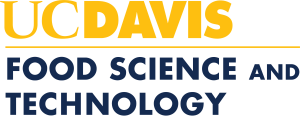A. Specific Learning Outcomes. Students will understand the following:
- Recognize key people in the development of enzymology.
- Assemble knowledge of the chemistry of proteins, their structure and general behavior to environmental conditions such as pH, temperature and solvents. Types of bonds important in maintenance of structure of proteins.
- Evaluate differences among proteins and how these differences can be used in their separation.
- Understand how protein concentration is measured, and how to identify which method is best for the purpose.
- Explain the nature of the active site of an enzyme including "lock and key" analogy and concept of "induced fit."
- Recognize factors that are important in accounting for the efficiency of enzyme catalysis. Be able to distinguish intra- vs intermolecular reactions, general acid-general base vs specific acid concept, nucleophilic and electrophilic catalysis. Generalize these concepts to other enzymes.
- Summarize what is meant by zero order and first order reactions with respect to substrate concentration in enzymology.
- Describe how to determine the rate constants for such reactions. The relationship between Km and (S), (S) and (E) in these cases.
- Justify the need to measure initial rates and how they are determined.
- Explain experimental methods for determination of Km and Vmax and Ki.
- Interpret graphical treatment of data
- Extend the concepts regarding one substrate reactions to two substrate
- Categorize and contrast sequential mechanisms (ordered and random) vs Ping Pong mechanism.
- Explain the concept of substrate inhibition and its effect on the (S) vs velocity curve.
- Describe the concept of the "turnover number" of an enzyme.
- Describe the relationship between enzyme concentration and velocity and some conditions that give rise to perturbation (and how) of the normal linear relationship between the two experimental parameters.
- Compare the conceptual and experimental distinctions between kinetically reversible and irreversible inhibition.
- Distinguish among the types of reversible inhibition (competitive, noncompetitive and uncompetitive) and general concept of how each acts to decrease enzyme activity.
- Synthesize experimental approaches to elucidating enzyme mechanisms.
- Recognize the importance of pH on stability and activity of enzymes and describe how the two effects can be distinguished experimentally.
- Demonstrate an understanding of the "transition state" concept (theory of absolute reaction rates) and how temperature increases the rate of a reaction through its increase of the fraction of total molecules which have activation energy Ea, or greater.
- Explain the concept of rate-determining step.
- Compare the six general types of chemical reactions enzymes catalyze and write a general equation for each. What is distinctive about each reaction?
- Recognize at least three different subdivisions of the hydrolases. How is each distinctive from the other?
- Explain the specificity of the glycosidases and how variation in the structure of compounds can be used to systematically delineate this specificity.
- Distinguish among among the three types of amylases.
- Distinguish between endosplitting and exosplitting enzymes,acting on polymeric substrates.
- Develop the ability to suggest one or more experimental methods that can be used to follow the rate of a reaction given the overall reaction catalyzed by the enzyme.
- Explain specific reactions catalyzed by the following enzymes using chemical formulas: amylases, cellulases, invertases and β-galactosidase.
- Describe the types of pectic enzymes and how to distinguish among them.
- Explain factors determining the substrate specificity of proteolytic enzymes.
- Explain the subdivision of the proteolytic enzymes based on the groups in the active site of the enzymes.
- Compare the oxidoreductases and the several ways in which they can carry out the oxidation or reduction of substrates
- Describe the importance of cofactors in the specific oxidoreductases listed in number 33.
How this course addresses IFT Core Competencies:
FST 123 is a 3 unit course entitled “An Introduction to Enzymology”. Although enzymes are a small component of foods, their impact is enormous. Examples of their importance include their roles in fruit and vegetable ripening, deterioration, and oxidative browning, meat tenderization, and their use in processing and as analytical tools. The students learn about the structure and stability of enzymes as proteins, which can be generalized to other food proteins. The section on separations is valuable information for both analysis of proteins and purification of enzymes. The section on chemical and enzyme kinetics gives them insight into the effects of temperature, pH, inhibitors and inactivators. The section on enzyme classification focuses on enzymes of importance to food properties, with special emphasis on hydrolases and oxidoreductases.
B. Tools used to assess program outcomes.
Bloom’s levels I-III.
This course develops an advanced undergraduate-level understanding of food science concepts. Assessment includes problem sets, two mid-term exams and a cumulative final exam.
C. Brief summary of assessment results to date.
Grading is done on a percentage basis, not a curve, and the students do well. As judged from interactions with the instructor and teaching assistants, and by exam scores, the students feel that they learned a significant amount in the class. Feedback and course evaluations are strongly positive.
